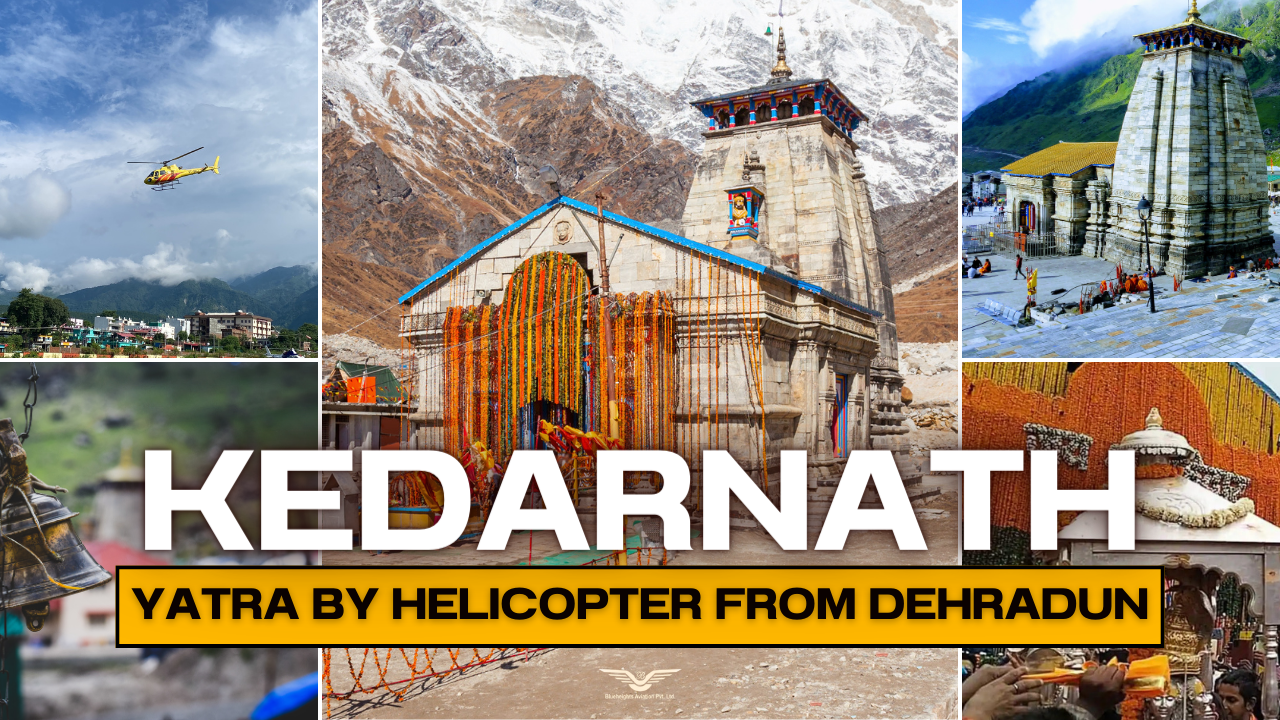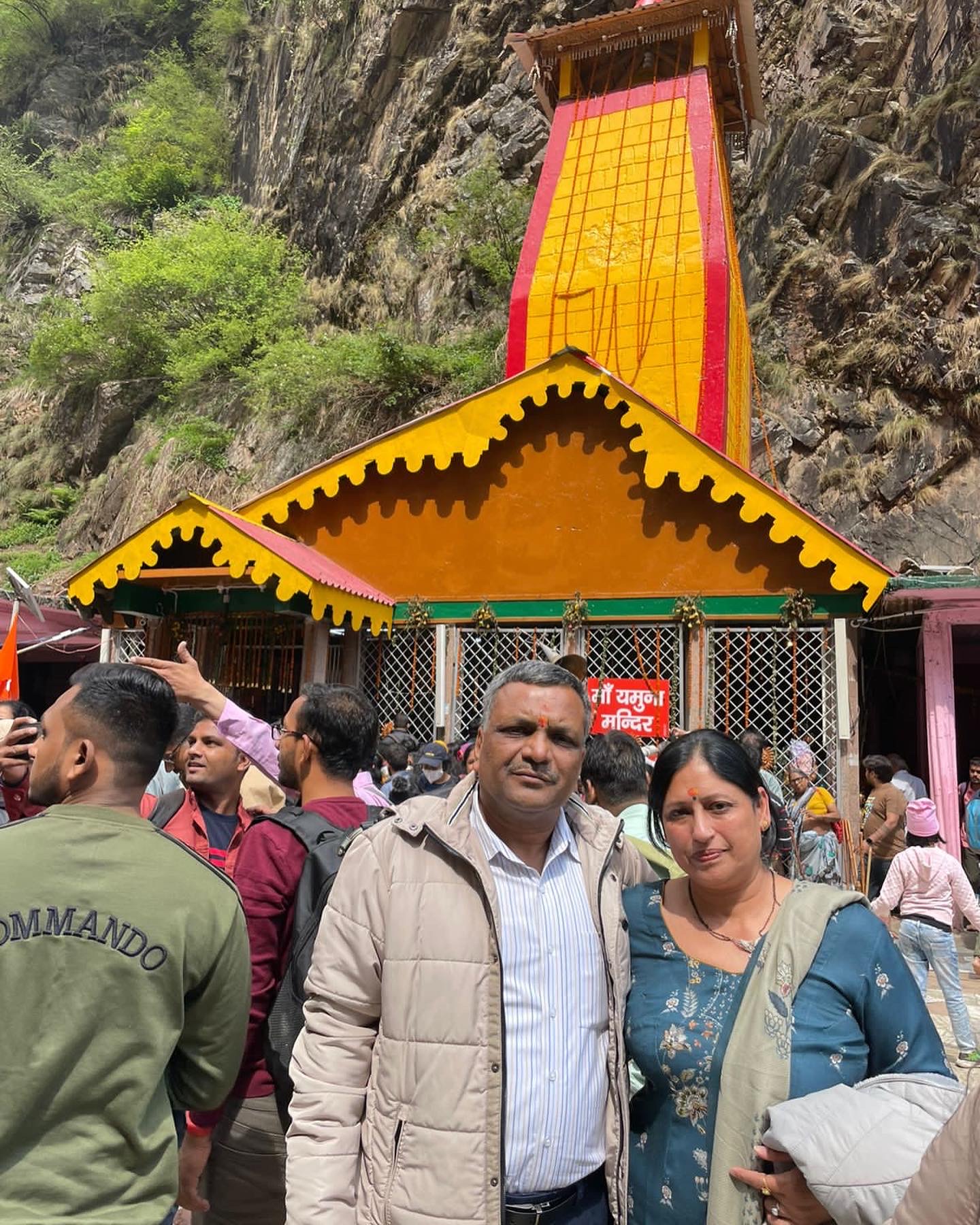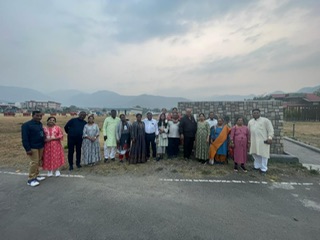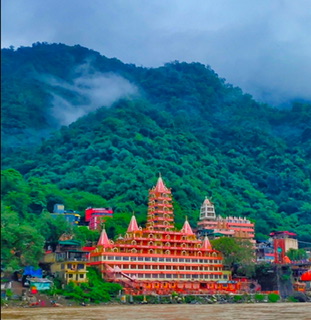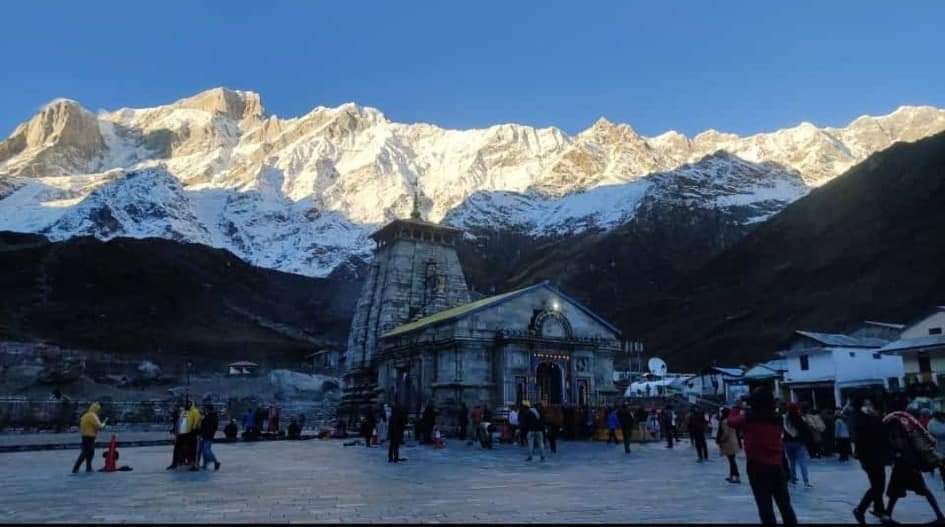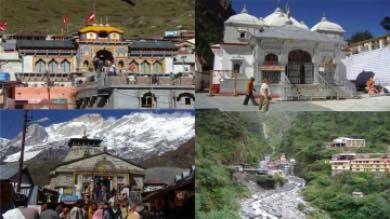27 Interesting Facts About Badrinath Temple: Blueheights Aviation
Badrinath is one of the sought-after destinations for any Hindu Pilgrim seeking moksha. From its glorified tales to its immaculate beauty, Badrinath gives you all the reasons to make it a part of your itinerary. But the most significant reason to drop into Badrinath is for Badrinarayan Temple. Located at the banks of the Alaknanda River in Chamoli, it is one of the most famous temples for God Vishnu.
Today we are going to unveil 27 facts Badrinath:
1. Legend of Badrinath and Budhisam
Rahul Sankrityan describes that statue in Badrinath as the image of Buddha. Dr. historian. Shiv Prasad Naithani does not think it is rational to find Buddhism within the statue of Badrinath based on a myriad of evidence.
According to his research, where the practice of Buddhism throughout the Himalayan region of Uttarakhand is all modern, not old-fashioned. Many of these statues were hacked and stolen from monasteries in Tibet.
2. Things to see Near Badrinath
Shri Laxmi Temple, Ghantakarna Temple, Hanuman Temple, the seat of Shankaracharya, and the temple's office committee are located on the temple's circumambulation (parikrama) pathway.
Other holy sites in the vicinity of Badrikashram (Badrinath) include Tapt-Kund, Aadikedar, Panch-Shilayen, Brahmkapal, Matamoorti, Bheempul Vyas-Gufa Charanpadukatirth, Satopanth, Wasudhara and many more are important sites close by002E
3. Situated in the Himalayan Region
Badrinath is the sole temple of India's four holy sites in the Himalayan region. Additionally, Badrinath is among the most sacred temples of Lord Vishnu and is located amid snow and mountains.
Badrinath is at an altitude of 3,133 meters (10,279 feet) at sea level. It is near the final Himalayan village of the Indian "Mana" and shares the frontier with China.
4. Badrinath is one of India's Char Dham.
There are four holy sites in India that are situated across four directions in India. Badrinath is among the four pilgrimage sites located in the northern part of India.
Badrinath Temple is the only temple that is part of both Char Dhams in India and Chota Char Dhams from Uttarakhand.
- Char Dham Temples in India include Badrinath, Dwarka, Puri, and Rameswaram.
- Chota Char Temples of Dhams in Uttarakhand include Badrinath, Kedarnath, Gangotri, and Yamunotri.
5. Other gods are worshipped in Badrinath Temple
The most important gods in the Garvgraha are revered by their order: Kubera, Garuda, Badrivishal, Uddhava, Narada, Narayan, and Nar.
6. In the Mahabharata, Badrinath is mentioned
There is mention of Pandavas' visit to Badarikashram within the Mahabharat Van Parva (134: 19-21).
The Pandavas could see The "Badri" tree, whose stem had smooth, round leaves with dense shade, and the stream of honey that was used to draw in the wonderful fruit of this tree.
7. Deity of Lord Badrinath
Lord Badrinath's Deity is located in the main Garvgraha, about three and a quarter feet high in Shaligram rock or quadrangle. Padmasan is a type of penance.
He's wearing a gold crown that is studded with gems. It is embellished by a tilak adorned with diamonds at the center of his face.
8. A Sweet Fact About Badrinath Sacred Offering (Prasad)
Van Tulsimala Raw gram, Van Tulsimala, Gola Sugar candy (Mishri), and many more. They are given in the name of Narayan by a Sacred/Holy offering (Prasad).
9. The truth about Badrinath Committee
Shri Badrinath Temple Committee was established in February 1941. The Government of Uttar Pradesh chose the committee's chairman at the time. Its members were selected through those in the Uttar Pradesh Legislative Council, Vidhan Sabha, and the Maharaj of Tehri with district Panchayat Chamoli.
The Uttarakhand government is currently in charge of naming the Chairman and committee members.
Badrinath Temple is now managed by UCDDMB (Uttarakhand Char Dham Devasthanam Management Board).
Devsthanam Management Board is created by the government of Uttarakhand that oversees over 50 temples in Uttarakhand.
10. Record Of Most Pilgrims Visitors
Badrinath is among India's most popular pilgrimage sites, with over 5,00,000 visitors (2021). The pilgrims were at the temple for six months.
In light of the hilly terrain and holy pilgrimage site in the remote region of Uttarakhand, Badrinath is one of India's most frequented holy sites.
11. Opens for 6 Months Only
The most important information regarding Badrinath is that, unlike the other three Char Dham pilgrimages of the Indian subcontinent, Badrinath is only one time that is closed for 6 months during the winter time and then opens for six months during the summer season.
We have to end the winter season because of the heavy snowfalls across the Himalayan region, which makes the temperatures extremely cold, and the entire region is covered in a dense coat of snow.
12. A Golden Fact about Badrinath
Among the most interesting facts regarding Badrinath is that the temple's gates, Garbhagriha were previously belonging to Silver Gates, were constructed from gold on the 12th Oct 2005 through Mumbai's Diamond Businessman Seth Motiram Vishandas Lakhi.
The Lakhi family presented an offering of the Golden Throne and Garvgraha (Garbhagriha), Golden Gates, to Lord Badrinath at Badrinarah Dham on 12 October.
We are grateful to these people who have donated and the devotees to Lord Badrinath. He contributed the golden throne and gates to Garbhagriha to the splendor of Badrinath.
13. A Rare Fact About Priests of Badrinath
Based on the formula of Swami Shankaracharya's Badrinath, the Badrinath temple is by Brahmins from the "Namboodiri caste" of South India and is referred to as "Rawal."
"Dandi Sanyasi Mahant" used to perform a ritual at Badrinath prior to Rawals.
Following the demise of the final Dandi Mahant, "Ramakrishna Swami," in 1776, He was his only successor. So the right to worship was taken from the control of the Dandi sannyasis. It was transferred to the control of Rawls.
14. Legend about the establishment of Badrinath
An old story is popular regarding the founding of Badrinath that Lord Shankar was on a trip towards the Himalayas with Mother Parvati. They saw a small baby crying on the Badrinath Marg.
Mother Parvati was sad and lifted the crying child in her lap. The child stopped crying and started smiling; then, the child appeared in the shape of Lord Vishnu.
Following that, Lord Vishnu demanded God Shiva and Mother Parvati to be urgent and said, Lord, this Kedarkhand can be considered your sacred region. Therefore, please give refuge for me in this holy region.
Due to the agreement of Shiva-Parvati, this Badrikashram region became the largest holy site for Vaishnavism in the Shiva area.
15. Unquenchable Light (Divya-Jyoti)
Every year, during the moment of the closing of the temple doors of Lord Badrinath the temple, a massive candle (Diya) is illuminated inside the temple. The Diya is filled to the brim with oil after the doors are shut.
It's hard to believe, but the truth is that it stays lit until the moment the doors are open.
16. An Inside Facts About Badrinath
The architecture that is the structure of Badrinath Temple is split into 3 components. Singh-dwar, Mandap, Garvagraha.
The Lord of Badrinath's deity Badrinath is found in the main Garbhagriha, located about three and a quarter feet high in Shaligram rock or quadrangle. Padmasan is a type of penance.
17. Mention in Sacred Books
Badrinath Temple is featured in various Hindus Sacred Books such as Bhagwat Puran and Skandpuran.
The area surrounding Badrinath Temple, which we call Badrikashram, is described in Padma Puran as a sacred site.
18. One in 108 Divya Desam
The Divya Desam is one of the eighteen Vishnu temples included within the work of the Alvars (saints). "Divya" means "divine," and "Desam" indicates "place of abode" (temple). Badrinath is one of the many Divya Desam.
Of the total of 108 Divya Desam, 105 are located in India. One is located in Nepal, while the remaining two are believed to belong beyond the Earthly realms.
19. Part of Panch-Badri Temples
Five temples are famous for Lord Vishnu, which is regarded as Panch Badri in Uttarakhand.
They are Badrinath Yogdhyanbadri, Badrinath, Vridha-Badri and Adi-Badri..
Badrinath can be described as the Biggest Vishnu temple of the five Panch-Badri's. The temples are all located within the Chamoli district in Uttarakhand.
20. Badrinath during British Rule (Facts about Badrinath)
The Badrinath temple fell to British rule when Garhwal was split into two parts during the 20th century. The managing committee of the Badrinath temple is still under Tehri Maharaj (King).
21. Disaster Prone Zone (Facts regarding Badrinath)
It is believed that the Badrinath temple has gone through many major restorations because of its age and the damage caused by an Avalanche.
At the end of the 17th century, the temple underwent some renovation. The king of Garhwal carried out expansion/
After significant damage from the devastating 1803 Himalayan earthquake, It was mostly rebuilt by the King of Jaipur.
22. Different names in different Periods (Yuga)
Under different Yugas, the Badrinath has been refered with the different names.
In Satya Yoga, Badrinath was refereed as Muktiprada – the residence of Lord Vishnu. In Treta Yuga, Badrinath was profoundly known as Yogasiddha. In Kal Yuga, it is widely known as Badri-Vishal or Badrinath while in Dwapar yuga, it is widely known as Vishala.
23. Markandeya Rishi Rock (facts about Badrinath)
Mentioned in the Bhagavata Purana that Markandeya Rishi Rock is dedicated to the place where their was conversation between a sage Jaimini and Markandeya Rishi.
The rock upon which he used to sit is known for its name Markandeya Shila.
24. Lord Ram Go to (facts concerning Badrinath)
Lord Ram was also present to Badrinath (Badrikashram) for a time to pay homage to Lord Narayan (Lord Vishnu).
25. Pandavas Go to (facts regarding Badrinath)
In the 134/19/21 chapter of " Mahabharata Van Parva, "there is a reference to the Pandavas visiting Badrinath (Badarikashram).
26. Tulsidas Tour (facts regarding Badrinath)
Goswami Tulsidas was on a pilgrimage through Kailash Mansarovar by way of Badrikashram (Badrinath) towards the close of the 16th century.
27. The Ved-Vyasa Cave (Gufa) (facts about Badrinath)
It is a renowned cave located in the spiritual town of Badrinath. The final item on the list of information about Badrinath is the Veda Vyasa cave located in the town of Badinath. It is where Ved Vyasa split all the Vedic Samhitas into various sections and classified each subject by segregating the different mantras.
The cave known as "Ved Vyas Rishi" is situated inside the village in Badrinath itself. The cave is over 5 000 years old.
The cave is constructed under an enormous stone 200m above Mana Village.
Veda Vyas Ji resided in the cave for quite a while and wrote Asta-das Puranas like Bharat Samhita, Mahabharata, Shrimad Bhagwat, and many more.
He also wrote the 18 (Eighteen) Puranas in this cave.

